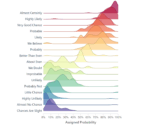In today’s data-driven world, innovation demands a deeper understanding of your information landscape. As data volumes exponentially grow and diversify, simply relying on one modality or one source no longer provides an adequate panorama for informed decision-making. Multi-modal data fusion—the strategic integration of distinct types of data—is becoming essential for businesses intent on staying ahead of the curve. By combining structured and unstructured data from multiple sources, enterprises gain richer insights, make more accurate predictions, and craft strategies that genuinely resonate. Leveraging comprehensive analytics leads to smarter growth, actionable insights, and a heightened competitive advantage. But how exactly can organizations effectively harness multi-modal data fusion strategies? Let’s dive deeper into practical strategies, best practices, and insightful considerations to transform your analytics approach.
What is Multi-Modal Data Fusion?
Multi-modal data fusion refers to the strategic integration and analysis of data sourced from multiple modalities or formats, such as text, images, audio, and structured databases. Each modality captures a unique aspect or dimension of a real-world phenomenon, offering complementary information that, when combined, paints a more accurate and complete picture. For example, when using Procore API consulting services, data gathered from project management software systems can be seamlessly integrated with spatial data from field sensors and visual imagery obtained from drones—resulting in more timely, precise construction project analytics.
Through multi-modal fusion, businesses can break down traditional data silos, linking internal structured data like customer databases and inventory records with external unstructured data, such as social media sentiment analyses or audio files from customer service interactions. This fusion empowers you to see patterns previously hidden, improving forecasting accuracy, decision-making efficiency, and contextual relevance.
Data fusion extends far beyond merely consolidating data. It engages sophisticated analytics techniques, including statistical methods, machine learning algorithms, and advanced computational models—enabling a seamless transition from independent datasets to integrated insights. In short, multi-modal data fusion drives deeper data-driven decisions, fueling organizational innovation and informed action.
Key Benefits of Utilizing Data Fusion Strategies
Improved Accuracy and Decision-Making
When organizations rely solely on singular or silo-specific data sources, critical insights are often missed, and decision-making may become biased or incomplete. Multi-modal data fusion mitigates these shortcomings by combining distinct sources, leading to higher accuracy and more informed business actions. For instance, integrating customer service interactions from calls (audio data) with reviews (text data) and purchasing behavior (structured databases) enables businesses to deeply understand and predict customer behavior more accurately, allowing tailored marketing strategies and better allocation of resources.
Enhanced Efficiency and Cost Savings
Fusing diverse data streams also enhances overall operational efficiency. For example, within inventory and supply chains, combining IoT sensor data with historical sales data and predictive analytics helps to proactively manage warehouse storage optimization. It results in efficient storage space utilization, reducing waste, lowering costs, and ultimately improving profitability. By linking multiple modalities, businesses optimize resources, mitigate risk, and realize operational efficiencies previously unobtainable through traditional siloed analytics methods.
Stronger Competitive Advantages
Companies embracing multi-modal analytics stay ahead of competitors because they’re better poised to recognize upcoming market trends quickly. By combining datasets like social media brand sentiment, customer behavior patterns, and real-time market analysis, forward-thinking organizations become resilient and agile, adapting swiftly to shifting market demands and customer preferences. Thus, employing strategic fusion provides long-lasting competitive advantages extremely beneficial for sustained organizational growth.
Challenges Encountered in Data Fusion Implementation
Data Integration and Compatibility Issues
One substantial challenge organizations frequently encounter is the technical difficulty of integrating multiple data formats and sources. Data originating from different systems often requires robust data engineering and standardization techniques, such as clearly defining the data structures to be used—an issue well-addressed in defining new SQL table structures. Achieving compatibility across varied data modalities requires specialized analytical expertise and experience in handling multi-dimensional data scenarios.
Ensuring Quality and Accuracy of Data
The quality and accuracy of fused data outputs directly depend on the original inputs. Poorly structured or mismanaged data may lead to misleading analysis and misinformed strategic moves. To avoid these pitfalls, you must ensure careful data hygiene practices, including comprehensive processes to collect and clean your data thoroughly. Adopting data governance models ensures accuracy, consistency, reliability in utilizing combined datasets, and confidence in your analytics outputs.
Organizational and Cultural Adaptation
The introduction of data fusion methodologies often disrupts established organizational methods and traditional problem-solving approaches. Embracing cross-functional data sharing and collaborative analytics require organizational leadership support, influencing your team’s analytics culture positively. Address potential resistance proactively and leverage strategic insights like those found in improving data-related project management dynamics to foster a thriving, aligned data-driven culture.
Effective Strategies and Best Practices for Data Fusion
Adopt a Scalable Architecture
Select onto data fusion architectures and processes that emphasize scalability, flexibility, and adaptability. Organizations need to ensure that chosen analytical approaches and data structures remain agile enough to scale up as data sources and complexities multiply. Efficiently scaling your analytics infrastructure enables greater responsiveness and ensures cost-effective management as data expands, while future-proofing your analytics investments.
Embrace AI & Machine Learning Capabilities
Artificial intelligence and machine learning play crucial roles in effective multi-modal data fusion. By applying AI frameworks, businesses readily analyze complex multi-modal datasets, automate feature extraction and pattern detection, and significantly increase analysis speed and granularity. A good example is using generative AI tools such as ChatGPT, explored deeply in our use cases of ChatGPT for small businesses article. Integrating AI into your data fusion strategy refines outcomes and generates robust, scalable insights.
Leverage the Expertise of Data Consulting Partners
Bringing in experts from specialized consultancies like ours can significantly expedite successful data fusion implementation. Effective partnering arrangements help internal teams build essential skills, leverage external perspectives, and harness decades of data analytics experience. Explore the advantages of collaboration, as highlighted in our insights into working with a small data consultancy firm.
Driving Innovation Through Comprehensive Data Fusion
Harnessing the power of multi-modal data fusion not only enhances enterprise decision-making effectiveness and efficiency but also enables innovation by reshaping how organizations view, interpret, and use their data. Through strategic data fusion, you achieve transparency across processes, identify untapped opportunities in customer interactions, and consistently create data-driven narratives that resonate both internally and externally—similar to those discussed in our guide about creating data-driven case studies that convert.
Removing excessive dependency on singular tools such as traditional spreadsheet software enhances morale and broadens solutions across entire teams, as outlined in our exploration of reducing dependency on Excel. Multi-modal fusion combined with powerful visual storytelling supports strategic realignment and operational improvements by leveraging dynamic dashboards, as discussed in rectifying failing dashboard strategies.
Ultimately, adopting a comprehensive multi-modal data fusion blueprint positions your organization to thrive competitively, make intelligent, confident choices, and boost innovative potential through exceptional data analytics.



















